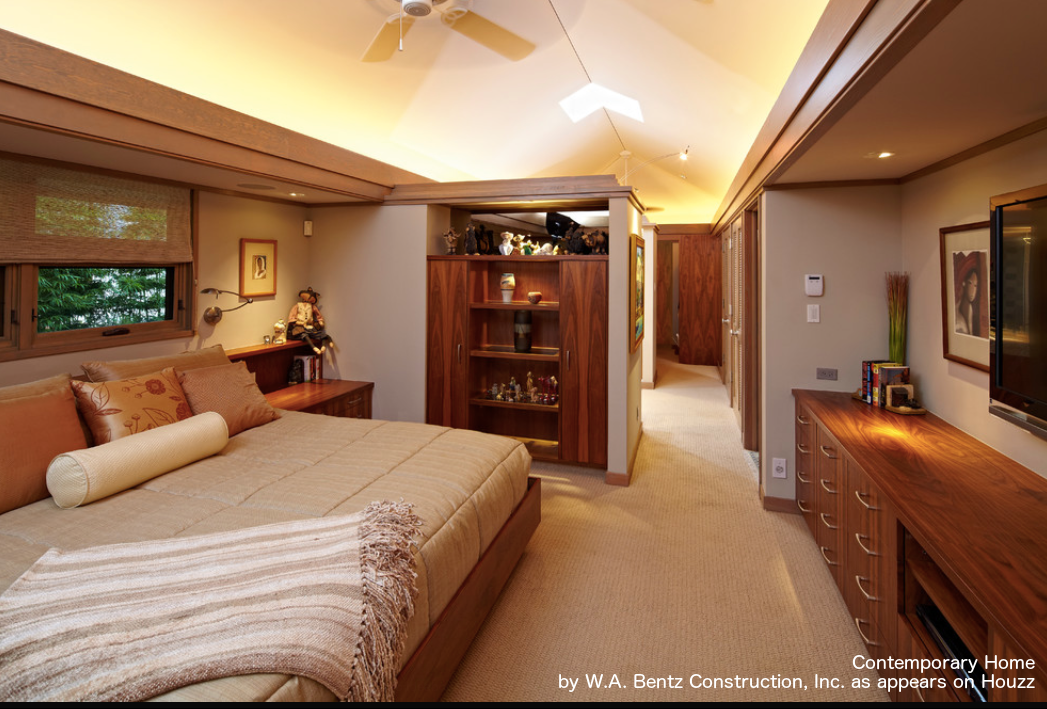Author Archives: charlesprogers
Breakfast in Bed – Game Day Breakfast: Denver Omelet and Strong Seattle Coffee

Post by Alison Hein.
I was rooting for the Patriots during the football playoffs. The reason? New England cuisine (think clam chowder, lobster rolls and brown bread) would be preferable to Denver fare (think, uh, lamb, beef and, uh…) at our annual Super Bowl team-themed party. And while I’m still not sure how to appropriately represent Colorado for the evening meal, I’ve got breakfast covered super-bly with a Denver Omelet!
Fresh green peppers, chopped onion and country ham are the basis for this colorful, flavorful omelet. My version also calls for some sweet red peppers and zesty cheddar. If you chop everything up the night before, with 10 minutes prep time, you can be settling in for a super game day breakfast in bed. Just don’t forget the strong Seattle coffee. Heck. Make it an espresso. Stay alert as you cheer your favorite team to victory.

Ingredients
1 teaspoon olive oil
¼ cup finely chopped onion
¼ cup finely chopped red bell pepper
¼ cup finely chopped green bell pepper
¼ cup cooked ham, cut into small cubes
1 tablespoon butter
2 eggs
¼ cup grated sharp cheddar cheese (optional)
Salt and pepper to taste
Preparation
Pour olive oil in heavy frying pan and heat over medium heat. Add chopped onion, red pepper and green pepper, and cook until softened, 3 to 5 minutes. Add the ham at the last minute, just to warm through. Set aside.

Melt butter in a separate small, heavy pan over high heat. Break eggs into small bowl and whisk until mixed. Add eggs to heated pan all at once and swirl to even. Tilt pan slightly, and every few seconds, use a jerking motion to pull the pan towards you so the eggs move away as they begin to cook. When the eggs begin to set but are still very soft in the center, remove the pan from the heat for a few seconds.
Spoon about 2/3 of the onion mixture over the top of the eggs. Sprinkle grated cheddar cheese on top of the onions, peppers and ham. Return the pan to the stove, reduce heat to low, and continue the jerking motion, this time holding the pan at an even higher angle, until the omelet begins to flip over onto itself. Give it a little push with a spoon or spatula if necessary. Leave folded omelet in pan and cook on low heat until cheese melts, less than 1 minute.
Turn the omelet out onto a plate, top with remaining onion/pepper/ham mixture, sprinkle with salt and pepper, and serve immediately.
Makes 1 serving.

Things We Like: Bedrooms In The Attic

Post by Kyle St. Romain.
Now that I’m temporarily back in the world cable television, I’ve been able to catch up on all my favorite HGTV shows. Having watched countless episodes of Rehab Addict, Property Brothers, and Love it or List it (to name a few), I’ve noticed a bit of a trend: attic spaces converted into master bedrooms. This concept is especially apparent in older New England homes.
But why build a bedroom in the attic? Many older homes were never designed to accommodate a large master suite, something in high demand for today’s homeowner. And when lot size limits your ability to build an addition to your home, an attic bedroom provides a creative solution. While the idea of an attic bedroom initially seemed a bit strange, it’s actually started to grow on me. I am much more partial to an attic bedroom than a basement bedroom. Have a look at some wonderful bedrooms occupying these often-wasted spaces.

If you’re considering converting your attic into a master suite, there are some questions you should ask yourself:
- Will you mind climbing up extra stairs to your bedroom every day? Most modern bedrooms are located on the main level, which makes them convenient to access. With an attic bedroom, you’ll have the privacy of your own floor, at the cost of some extra cardio.
- Is your attic able to be converted to a master bedroom? The first consideration is size, as not all attics are big enough to accommodate a master suite. Also, if you have ductwork and hot water heaters in your existing attic it may be cost prohibitive to relocate all these utilities. Other considerations include installing windows, plumbing and electrical, as well as structural limitations. That said many attic bedrooms often feature very cool vaulted ceilings, which can add some serious visual appeal to your space that you couldn’t (or wouldn’t) otherwise create.
- Will converting your attic into a master bedroom yield a positive return on investment? To answer this question, you’ll have to do some research to see what price gains you may realize from increasing the size of your home’s living space. The return on your investment may not always be a top priority, however, especially if your home is already in your ideal neighborhood.

Understandably, attic bedrooms aren’t for everyone. But if your budget, lifestyle, and home can accommodate an attic-to-bedroom conversion, then you just may be able to create the master suite of your dreams. As always, I recommend checking out Houzz for more attic bedroom inspiration.
Breakfast in Bed – Eggs à la Martin

Post by Alison Hein.
Through researching old cookbooks I’ve found that baked egg dishes were popular during the 1920s, and that someone named Martin figured prominently in the culinary world. Sarah Tyson Heston Rorer included a recipe for Eggs à la Martin without spinach in her classic cookbook Many Ways for Cooking Eggs. Another great culinary matriarch, Fannie Farmer, showcased Eggs with Spinach à la Martin in her famed Boston Cooking-School Cook Book. In this case, however, ham, as well as red and green peppers, were added to the mix. The meat, vegetables and eggs were cooked omelet style, then served over a bed of cooked spinach.
Interpreting a bit from Sarah and a little from Fannie, I came up with my own take on Eggs à la Martin – individual egg portions nestled onto a thick bed of spinach and breadcrumbs, baked in a creamy white sauce and topped with melted sharp cheddar cheese. Bubbly and hot from the oven, golden yolks blending with rich creamed spinach, these little eggs are sure to delight for a lazy Sunday morning or cozy breakfast in bed.
Perhaps something even Martin (whoever he was) would approve.

Ingredients
Cooking spray
2 tablespoons butter
2 tablespoons flour
1 cup milk
2 tablespoons bread crumbs
½ cup chopped frozen spinach, thawed
2 eggs
Salt and pepper, to taste
½ cup grated cheddar cheese
Preparation
Preheat oven to 325°. Spray 2 ramekins or small oven-proof dishes with cooking spray.
To make white sauce, melt butter in small heavy saucepan over medium heat. Whisk in flour until smooth, thick paste forms. Whisk in milk and cook until slightly thickened, 3 to 4 minutes, stirring constantly. Set aside and keep warm.

Add half of the breadcrumbs to each of the ramekins, then top with half the spinach. Pour enough white sauce on top to cover the spinach, then add a whole, cracked egg to each dish. Top with enough white sauce to cover each egg, then sprinkle half of the cheese on top of each dish.
Place eggs in oven and bake until whites are set and cheese is melted and bubbly, about 20 minutes. Cook eggs a little longer if you’d like the yolks to be cooked through. Serve hot with buttered toast, if you like.
Makes 2 servings.

Things We Like: Sleeping In Total Darkness

Post by Kyle St. Romain
In previous articles, we’ve discussed the three basic ingredients for a good night’s sleep: (1) a dark room; (2) a cold room; and (3) a luxurious bed. There are some other things you can do that will help you sleep more restfully, like: getting enough exercise, eating the right foods, and even wearing a pair of socks to bed, but a comfortable bed in a cold, dark room are the pillars of good sleep.
Unfortunately in today’s world, many people sleep in relatively light rooms. Some people even sleep with the television set on — something I do not understand. But even if you’re able to fall asleep in a lit room or actually prefer it, chances are you’re not getting the best night’s sleep you could. So today we’re going to discuss exactly why total darkness is a must-have for your mind and body to rest properly.
Darkness was probably something our ancestors took for granted (read: feared). With no electricity or artificial lights, early humans lived by the natural cycles of day and night — the key word being natural. With the advent of fire we started to become masters over our domain. Fast forward to present time and it’s all but impossible to find total darkness outside unless you’re camping somewhere remote. This is especially true for those of us who live in urban environments where almost every street is laden with artificial lights — lights that are considerably brighter than what we would otherwise be exposed to at night (the moon and stars).

In darkness, our brains are wired to produce melatonin, a hormone that helps lower blood pressure, glucose, and body temperature. The production of melatonin is one of the most important physiological responses that helps us sleep better. When melatonin production is suppressed, we start to go into sleep debt, which can cause fat gain, insulin resistance, and inflammation.
When we are exposed to light before going to sleep, however dim, our bodies’ natural rhythm gets thrown out of whack. Making matters worse is that many light bulbs, computer screens, and smartphones emit blue light, one of the most stimulating colors of light. Exposure to blue light from a computer screen is why it’s harder to fall asleep quickly after responding to those late night emails.
If you’re struggling with overexposure before bed, here are some helpful tips for eliminating light before sleep:
- Blackout curtains are an easy way to keep unwanted light from coming through your windows.
- Get rid of electronics in the bedroom. All those little power indicators can create quite a bit of light in an otherwise dark room. Clock radios, televisions, computer screens, and other gadgets are common sources of light in the bedroom. Even if these devices are not emitting light, their electrical currents can still disrupt your sleep pattern, so get them out of the bedroom.
- Color shift your computer screen. Working late is a fact of life for many of us, but if you have to be on the computer after sundown, you should at least try to minimize the damage. Having used the program f.lux for a number of years, it now hurts my eyes to look at a “regular” screen at night. This is something I cannot recommend enough.
So next time you’re having trouble going to sleep, think about how much light you were exposed to right before bed. You may find that a little less light is just what your body needs to get out of sleep debt.


